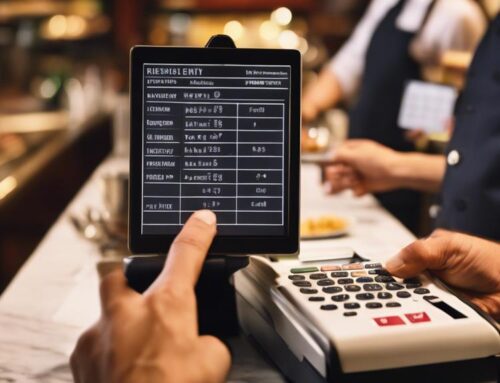When managing seasonal menu changes in your restaurant’s menu data entry, ensure accuracy and timeliness for smooth operations. Organize and archive menus meticulously to streamline efficiency. Notify customers promptly about menu updates for improved communication. Plan ahead for seasonal changes by strategizing menu rotations and ingredient sourcing. Enter menu data updates promptly to maintain accuracy and incorporate customer feedback for improvements. Train your staff consistently on menu changes to enhance knowledge and customer engagement. Consider utilizing restaurant management software to streamline operations and optimize efficiency. Ensure precision and attention to detail to maximize customer satisfaction and operational success.
Importance of Seasonal Menu Updates
When updating seasonal menus in a restaurant data entry system, it is crucial to ensure accuracy and timeliness for smooth operations. Menu creativity plays a vital role in captivating customers and enhancing their satisfaction. By incorporating fresh and innovative dishes that align with seasonal themes, you can keep your menu exciting and relevant. This not only boosts customer interest but also leads to increased revenue as patrons are more likely to return to try new offerings.
Customer satisfaction is directly tied to menu relevance. Regularly updating your menu ensures that it remains appealing and meets the evolving preferences of your clientele. By paying attention to details such as ingredient availability and seasonal trends, you can create a menu that resonates with your target audience. This proactive approach demonstrates your commitment to providing a memorable dining experience, ultimately driving customer loyalty and positive reviews. Remember, a well-curated seasonal menu is a powerful tool in attracting and retaining customers while maximizing your restaurant’s profitability.
Organizing and Archiving Menus
To ensure efficient management of seasonal menus, meticulously organizing and archiving menus is essential for streamlined restaurant operations. Menu storage plays a crucial role in maintaining easy access to past and current menus. Utilize digital storage solutions or physical filing systems to categorize menus based on seasons, years, or specific promotions. Clearly label each menu to ensure quick retrieval when needed. Implement a standardized naming convention for files or folders to aid in systematic organization.
Menu categorization is another key aspect of organizing menus effectively. Group menus by type, such as breakfast, lunch, dinner, or by cuisine style. Create subcategories within each menu type for further organization, such as appetizers, entrees, desserts, and beverages. This methodical approach facilitates swift updates and modifications when transitioning between seasonal menus. Regularly review and update menu storage to keep information current and easily accessible. By maintaining a well-organized menu archive, you pave the way for smoother transitions and enhanced operational efficiency in handling seasonal menu changes.
Communicating Changes to Customers
When updating your seasonal menu, ensure to notify your customers promptly through menu update notifications to keep them informed of the changes. Utilizing digital menu boards can efficiently display the updated offerings, making it easier for patrons to see the new items. Communicating these changes effectively is crucial in maintaining customer satisfaction and driving interest in your seasonal menu updates.
Menu Update Notifications
Effective communication of menu updates to customers is essential for ensuring a seamless dining experience. Implement menu change alerts and ensure thorough staff training to guarantee accurate information dissemination. When updating prices and incorporating seasonal ingredients, timely notifications are key to managing customer expectations. Utilize various communication channels such as social media, email newsletters, and in-house signage to inform patrons about the changes. Clearly highlight the modifications to pique interest and generate excitement among customers. Consistency in conveying updates is crucial to maintaining customer trust and loyalty. Regularly update your online platforms and menus to reflect the current offerings accurately. By keeping customers informed and engaged, you enhance their overall dining experience.
Digital Menu Boards
Consider utilizing digital menu boards as a dynamic and efficient way to communicate seasonal changes to your customers. These boards allow for quick updates to menu design, engaging customers with visually appealing displays. By showcasing seasonal items, pricing strategies, and promotional offers on digital screens, you can easily capture customer attention and drive sales. Implementing digital menu boards enables real-time adjustments, ensuring that your customers are always informed about the latest offerings. This modern approach not only enhances customer engagement but also streamlines the process of updating menu information. Take advantage of digital menu boards to effectively communicate seasonal menu changes and entice your customers with enticing visuals and information.
Planning Ahead for Seasonal Changes
When preparing for seasonal changes in your restaurant’s menu, it’s crucial to plan ahead for menu item rotation and ingredient sourcing. By carefully considering which items will be rotated in and out, you can streamline the data entry process and ensure accurate menu updates. Additionally, sourcing seasonal ingredients early on will help you avoid last-minute rushes and maintain consistency in your dishes.
Menu Item Rotation
To streamline seasonal menu changes efficiently, consider implementing a systematic approach to menu item rotation for planning ahead. Menu item pairing is crucial when rotating dishes to ensure a harmonious flow of flavors on the menu. By carefully considering the flavor profiles of each dish, you can create a balanced and diverse selection that entices customers with a variety of tastes. When planning for seasonal changes, think about how different dishes complement each other and how they can be swapped out to keep the menu fresh and exciting. This strategic rotation not only helps in maintaining customer interest but also allows you to make the most out of seasonal ingredients while showcasing your culinary creativity.
Ingredient Sourcing
For optimal seasonal menu changes, ensure meticulous planning in sourcing ingredients ahead of time to maintain freshness and quality throughout the rotation. When it comes to ingredient sourcing, paying attention to supplier relationships is crucial for securing the best and freshest produce for your seasonal dishes. This not only enhances the quality of your menu items but also fosters a sense of trust and reliability with your suppliers, ensuring a smooth transition with each seasonal change. Additionally, managing costs effectively plays a significant role in maintaining menu consistency. By negotiating prices with suppliers and planning your ingredient sourcing strategy wisely, you can balance quality and cost to offer your customers a consistent dining experience while showcasing your menu creativity.
Timely Menu Data Entry Updates
Ensure menu data updates are promptly entered into the system to maintain accuracy and efficiency during seasonal menu changes in the restaurant. When updating menu data, pay close attention to menu pricing and inventory levels. It is crucial to ensure that the new seasonal items are correctly priced and that the inventory is accurately reflected to avoid any discrepancies. Additionally, consider incorporating feedback from customers into the menu design updates. Timely data entry updates allow for seamless transitions between seasonal menus, preventing any confusion or delays in serving customers.
Efficiency is key when updating menu data. Make sure to prioritize accuracy to prevent any errors in pricing or inventory management. Regularly reviewing and updating the menu based on customer feedback ensures that the offerings remain appealing and align with the preferences of your clientele. By promptly entering these updates into the system, you can streamline operations and provide a consistent experience for customers. Remember, staying on top of menu data entry is essential for maintaining a well-functioning and profitable restaurant during seasonal changes.
Training Staff on Menu Changes
When training your staff on menu changes, emphasize the importance of consistent and thorough communication to ensure smooth transitions in the restaurant. Here’s how to effectively train your staff on menu changes:
- Staff Training: Provide comprehensive training sessions to ensure all staff members understand the new menu items, ingredients, and any changes in preparation methods. Encourage open communication channels for any questions or clarifications.
- Consistency is Key: Emphasize the importance of consistency in menu knowledge and presentation. Ensure that all staff members are on the same page regarding menu changes to provide uniform information to customers.
- Regular Updates: Schedule regular meetings or training sessions to keep staff informed about any further menu adjustments or seasonal changes. This ongoing training will help maintain menu consistency and improve overall customer satisfaction.
Utilizing Restaurant Management Software
Utilize restaurant management software to streamline operations and enhance efficiency in handling seasonal menu changes. Inventory management features in these software systems allow you to track ingredient levels accurately, ensuring you have the necessary items for new seasonal dishes. Menu analysis tools help you identify popular items and trends, guiding you in making informed decisions about which seasonal dishes to introduce or remove.
Moreover, pricing strategy modules within the software enable you to adjust prices seamlessly to reflect seasonal menu changes and ingredient costs accurately. This ensures that your pricing remains competitive while maintaining profitability. Additionally, integrating customer feedback mechanisms into the software allows you to gather valuable insights on seasonal menu items. By analyzing feedback promptly, you can make real-time adjustments to the menu based on customer preferences and satisfaction levels.
Frequently Asked Questions
How Can Restaurants Effectively Gauge Customer Preferences for Seasonal Menu Items?
To effectively gauge customer preferences for seasonal menu items, gather feedback through focus groups and surveys. Conduct menu testing to fine-tune offerings based on customer input. Engaging with your clientele ensures that your seasonal menu resonates with their tastes.
What Are Some Best Practices for Sourcing Seasonal Ingredients for Menu Updates?
When updating menus, focus on sourcing seasonal ingredients sustainably. Plan menus meticulously, considering cost analysis. Prioritize freshness, quality, and local suppliers. Incorporate seasonal offerings creatively to entice customers and showcase your commitment to sustainability.
How Can Restaurants Ensure That Seasonal Menu Changes Align With Their Overall Brand and Concept?
To ensure seasonal menu changes align with your brand, gather customer feedback regularly. Maintain concept consistency by incorporating seasonal ingredients creatively. Promote new menu items effectively to showcase your brand identity and keep customers engaged.
What Are Some Strategies for Promoting Seasonal Menu Items to Customers?
To boost your seasonal menu promotions and engage customers, try creative seasonal marketing techniques. Highlight menu specials through social media, email campaigns, and in-house displays. Encourage customer engagement by offering exclusive seasonal deals and limited-time offers.
How Can Restaurants Effectively Track the Success of Seasonal Menu Changes and Make Adjustments as Needed?
To effectively track seasonal menu changes, analyze sales data and gather customer feedback. Utilize menu engineering to evaluate item performance and adjust pricing strategies accordingly. Stay nimble to make timely adjustments for optimal results.




